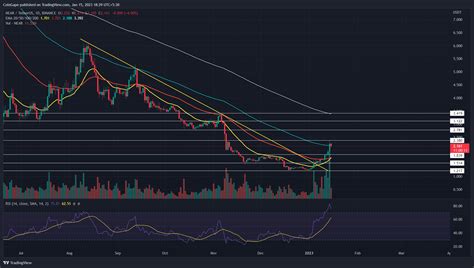unlock the potential of the cryptocurrency with almost protocol: a unique consensus mechanism for safe and scalable transactions
In recent years, the world has experienced an increase in interest in cryptocurrencies to save, send and use digital assets. Under these cryptocurrencies near the protocol (nearby) due to the innovative consensus mechanism, it has considerably taken into account, which promises to revolutionize the way we think about decentralized networks. In this article, we will deal with the world of the almost protocol and examine its unique functions in order to emphasize the advantages that you offer compared to conventional cryptocurrency protocols.
What is cryptocurrency?
Cryptocurrencies are digital or virtual currencies that use cryptography for safe financial transactions and manage the creation of new units. The best known cryptocurrencies are Bitcoin (BTC), Ethereum (ETH) and Litecoin (LTC). You work in a decentralized network and enable users to send, receive and save value without the need for intermediaries such as banks.
What is near the protocol?
Near the protocol (nearby) there is an open source blockchain protocol with proof-of-stake-based, with which developers can create and provide scalable, secure applications. It is a hybrid consensus algorithm that combines the advantages of shaping and Byzantine fault tolerance (BFT) that represent critical components for the security and integrity of decentralized networks.
Unique consensus mechanism
The unique consensus mechanism of protocol is based on a combination of Byzantine fault tolerance (BFT) and Proof-of-Stake (POS). This is how it works:
- Sharding : Near the protocol, its blockchain divides into smaller shards with 100,000 blocks each. This enables faster transaction processing times and reduces the total block time to just one second.
- Byzantine fault tolerance (BFT) : The protocol uses a BFT algorithm that ensures that the nodes in the network agree on a number of rules and values before a new condition agrees. This prevents malignant actors from manipulating the network.
- Proof-of-Stake (POS) : Near of Protocol’s POS-Mechanism, Validators rewarded with part of their transaction fees, with incentives to maintain the node stability and the integrity of the network.
Advantages over traditional cryptocurrencies
Near Protocol offers several advantages over conventional cryptocurrencies:
- Scalability

: The shaded architecture nearby enables faster and more efficient processing times, so that it is suitable for highly volume transactions.
- Safety : The Byzantine error tolerance (BFT) ensures that the network remains safe in the presence of malicious actors.
- Decentralized Governance : Near the POS mechanism of Protocol, it enables the municipal condition and enables users to participate directly in decision-making processes.
- Interoperability : The Shared architecture nearby enables seamless integration into other blockchain protocols, which makes it easier to create decentralized applications (DAPPS) over the protocol.
Application cases and applications
Near the protocol has a wide range of applications and applications that use its unique functions:
- Decentralized financing (defi) : The Shared architecture nearby enables quick and safe transactions, which makes it an attractive platform for defi applications.
- Gaming : The decentralized governance model of the protocol enables community-controlled decision making and creates a more player-friendly gaming experience.
- Supply Chain Management
: The scalability and security features of protocol are suitable for supply chain management applications.
Diploma
Near the protocol is an innovative cryptocurrency that offers a unique consensus mechanism that combines the advantages of Sharing and Byzantine error tolerance (BFT) with Proof-of-Stake (POS).

